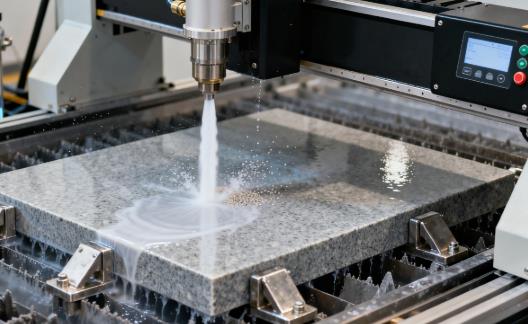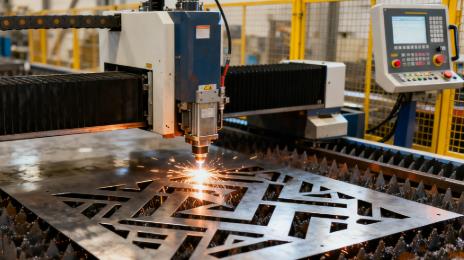In today’s manufacturing world, CNC cutting machines have become an essential tool. They transform digital designs into precise physical components, revolutionizing industries from automotive to aerospace. Whether you’re a beginner curious about their operation or a professional seeking deeper technical insight, this guide covers the fundamentals, core technologies, FAQs, and — most importantly — key steps to choosing the right CNC cutting machine.
1. What Is a CNC Cutting Machine?
1.1 Definition
A CNC (Computer Numerical Control) cutting machine is an automated tool controlled by computer programming. Unlike manual cutting, which depends heavily on operator skill and is prone to errors, a CNC machine follows pre-programmed G-code — a numerical language for CNC tools — to cut, engrave, or shape materials with exceptional accuracy.
Key Features of CNC Cutting Machines:
- Automation: Once programmed, it can run 24/7 with minimal supervision.
- High Precision: Tolerances as tight as ±0.001 inch (0.025 mm), ideal for demanding industries.
- Versatility: Capable of cutting metals (steel, aluminum), wood, plastics, glass, and composites.
1.2 How Does a CNC Cutting Machine Work?
The CNC cutting process is both streamlined and efficient, typically involving four core steps:
- Design Creation: A 2D or 3D digital model is created using CAD software (e.g., AutoCAD, SolidWorks).
- G-Code Conversion: CAM software converts the CAD file into G-code, translating design data into machine-readable instructions (e.g., “Move X-axis 10 mm at 500 mm/min”).
- Machine Setup: The material is fixed (e.g., clamping a steel sheet) and the G-code is loaded into the CNC controller.
- Automatic Cutting: The controller sends signals to motors (servo or stepper) that drive the cutting tool (laser head, plasma torch, etc.) along the X/Y/Z axes to perform precise cutting operations.

2. Core Technologies Behind CNC Cutting Machines
2.1 Key Components
The performance of a CNC cutting machine depends on five main components:
| Component | Function Description |
|---|---|
| CNC Controller | The “brain” of the machine, processing G-code and sending commands to the motors. |
| Drive System | Includes motors (servo = speed & accuracy; stepper = cost-effective) and ball screws/linear rails for motion control. |
| Cutting Tool | Varies by material: laser (for metals/plastics), plasma (for thick metals), milling cutter (for wood/metal shaping), waterjet (for glass or heat-sensitive materials). |
| Worktable | Holds materials securely — via vacuum suction (for wood/plastics) or mechanical clamps (for metals). |
| Cooling System | Prevents overheating: liquid cooling (for laser/plasma) or air cooling (for smaller mills). |
2.2 Common CNC Cutting Technologies (Pros & Cons)
CNC Laser Cutting
- Working Principle: Uses a high-powered laser beam to melt or vaporize material.
- Best For: Thin metals (≤20 mm steel), plastics, wood, acrylic.
- Pros: Exceptional precision, non-contact (no deformation), smooth edges.
- Cons: Costly for thick metals; unsuitable for highly reflective materials (like copper).
CNC Plasma Cutting
- Working Principle: Uses ionized gas (plasma) at temperatures up to 20,000°C to cut metals.
- Best For: Thick metals (≤100 mm), stainless steel, aluminum.
- Pros: Fast and cost-effective for heavy-duty metal cutting.
- Cons: Less precise than laser; rougher cut edges (requires post-processing).
CNC Waterjet Cutting
- Working Principle: Uses ultra-high-pressure water (60,000 PSI) mixed with abrasives (e.g., garnet) for cutting.
- Best For: Heat-sensitive materials (glass, stone, rubber) and thick metals.
- Pros: No heat-affected zone, can cut almost any material.
- Cons: Slower speed; higher maintenance cost due to abrasive replacement.
3. Common CNC Cutting Machine FAQs
3.1 How to Choose the Right CNC Cutting Machine?
Follow these four steps to avoid costly mistakes:
- Identify Your Material:
- Thin metal/plastic → Laser cutting
- Thick metal → Plasma cutting
- Heat-sensitive materials → Waterjet cutting
- Check Precision Requirements:
- Aerospace/medical parts (±0.001 in) → Laser cutting
- Construction parts (±0.01 in) → Plasma cutting
- Assess Production Volume:
- Small batch → Desktop CNC (e.g., laser engraver)
- Large-scale → Industrial-grade CNC (e.g., 5-axis plasma cutter)
- Set a Budget:
- Desktop laser cutter: USD $2,000–$10,000
- Industrial plasma cutter: USD $50,000–$200,000
3.2 Why Has My CNC Cutting Accuracy Decreased?
| Issue | Cause | Solution |
|---|---|---|
| Linear rails/ball screws worn out | Dirt or wear causing movement gaps | Clean and lubricate monthly; replace if worn |
| G-code errors | CAD/CAM conversion mistakes | Use reliable CAM software (e.g., Fusion 360) and run test cuts |
| Material shifting | Poor clamping or table grip | Use stronger clamps or vacuum worktable for lightweight materials |
3.3 How to Maintain a CNC Cutting Machine?
- Daily: Clean worktable and cutting tools; inspect loose wires.
- Weekly: Lubricate rails and ball screws; check the cooling system.
- Monthly: Calibrate machine accuracy (using precision rulers); replace air filters (for laser/plasma).
- Yearly: Hire professionals to inspect the controller and motors.
4. Industrial Applications of CNC Cutting Machines
- Automotive: Precision cutting of steel frames and aluminum components.
- Aerospace: Laser cutting of titanium parts — lightweight yet durable.
- Furniture Manufacturing: Milling machines carve intricate wood patterns for cabinetry.
- Medical Sector: Waterjet cutting of surgical instruments with no thermal damage to stainless steel.
5. Insights from Rapid Model
CNC cutting machines are the backbone of modern manufacturing — their precision and automation save time and reduce human error dramatically. By understanding the fundamentals, core technologies, and common troubleshooting methods, you can make the most of this powerful tool, whether you’re a hobbyist or factory owner.
If you’re still unsure which CNC cutting machine best fits your needs, refer to the American Manufacturing Technology (AMT) standards and trend reports for professional guidance.



